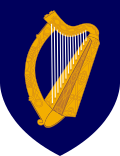Pre-independence
The county was a unit of judicial and administrative government introduced to Ireland following the Norman invasion. The country was shired in a number of phases with County Wicklow being the last to be shired in 1625. County Tipperary was divided into two judicial counties (or ridings) following the establishment of assize courts in 1838. At various times in the past, other entities at a level below that of the county or county borough have been employed in Ireland for various judicial, administrative and revenue collecting purposes. Some of these, such as the barony and grand jury, no longer fulfil their original purpose while retaining only vestigial legal relevance in the modern state. Others, such as the poor law unions, have been transformed into entities still in use by the modern state, but again, their original functions have been substantially altered.
Sixty years later, a more radical reorganisation of local government took place with the Local Government (Ireland) Act 1898. This Act established a county council for each of thirty-three Irish administrative counties (County Tipperary was divided with North Riding and South Riding) and a county borough corporation in six cities that were separate from their respective counties. Each county was divided into urban and rural districts. Urban districts in the area of five municipal boroughs retained the style and title of a borough with a corporation. In all other places, a district council was established. Smaller towns retained town commissioners within rural districts.
Development since 1922
The geographic remit of the Irish Free State, established in December 1922 pursuant to the Anglo-Irish Treaty of 1921, was confined to 26 of the traditional counties of Ireland, which included 27 administrative counties and four county boroughs.
Rural districts were abolished everywhere except County Dublin in 1925, and in County Dublin in 1930.
In 1994 County Dublin and the borough of Dún Laoghaire were abolished with their administrative areas being divided among three new counties: Dún Laoghaire–Rathdown, Fingal and South Dublin. The state was divided into eight Regional Authorities.
The Local Government Act 2001 simplified the local government structure, with the principal tier of local government (county and city councils) covering the entire territory of the state and having general responsibility for all functions of local government except in 80 towns within the territory of county councils, where the lower tier (town councils) existed with more limited functions. The five county boroughs of Dublin, Cork, Galway, Waterford, and Limerick were re-styled city councils, with the same status in law as county councils. The lower-level tiers of borough corporations, urban district councils and town commissioners were reduced to a single tier of town council, with five permitted to retain the title of borough council: the city of Kilkenny and the four towns of Sligo, Drogheda, Clonmel, and Wexford.
The Local Government Reform Act 2014 enacted changes which took effect after the 2014 local elections:
The civic and ceremonial status of existing cities, boroughs and larger towns was retained after being merged with counties. Those municipal districts that included existing cities or boroughs merged became either "metropolitan districts" or "borough districts". They continue to have mayors as do those districts containing county towns. In all other councils the equivalent office is known as Chair or Cathaoirleach. Each municipal district was issued with a new statutory charter setting out its powers alongside any historic charters that already existed. [11]
At the 2019 Limerick City and County Council election, voters approved a proposal in a plebiscite on the establishment of a directly elected mayor for Limerick City and County by a vote of 52.4%. [12] Support for directly elected mayors has been almost equally divided when put to a popular vote. While the Limerick plebiscite passed by a small margin, voters in Waterford and Cork both rejected the proposal by equally small margins in 2019. [13] The 2024 Limerick mayoral election took place in June 2024, with John Moran, an independent candidate being inaugurated as the first directly elected mayor in Ireland on 21 June 2024. [14]

